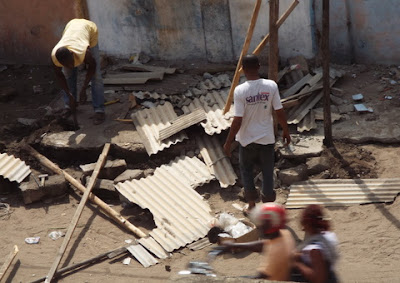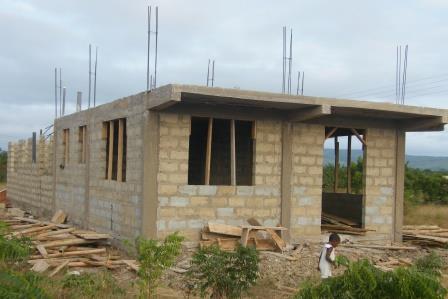When? September 2012, hopefully. Why a post about now? Because this move, the 21st in my life, will be (1) somewhat radical, although it's become difficult for me to say what is radical and what is not, considering my rather unusual life; (2) hopefully one of my last, if not the last one.
Wait a minute... I never thought I'd ever say "my last move". Am I growing old or what?
Now to the where, why, and how.
Where: Baboonland is still in the GAR (Greater Accra Region), but about 50km from Accra. I acquired a comfortably large piece of land where I intend to erect a small house amid a lot of fruit trees. My shack in an orchard. Does it sound like a dream?
Why: Baboonland, because I love the area. I've loved it for more than 10 years. When I saw an opportunity to acquire land there, I jumped on it. It was a bit of a gamble, considering how land deals go in Ghana and, as far as I know, mostly everywhere in Africa, since I was the first to sign up on a new programme. I wanted unspoiled land, and although I'll welcome neighbours sometime in the future (read: when I grow older and dependent), I wanted to be able to enjoy the quiet for a few more years, before everybody else builds on their plots and move in. I'll still enjoy privacy, since my property covers a whole block. Fortunately, everything went smoothly with the purchase and I'm now ready to start building.
How: Like a trip, part of the excitement of moving to a new place resides in the planning itself. I've been researching building techniques, drawing endless plans, etc. for months. Years. I want something small. No sprawling building, no empty, dust-gathering rooms, no inefficient corridors and other wastes of space. Small is beautiful, they say. More to the point, small will make it easier to maintain myself. Having lived 13 years in Paris, I know all about cramped spaces. While I don't plan on living in a "cramped" space, I fully intend to make rational use of whatever space I decide to have, keeping in mind that the overall impression I want to achieve is that of a weekend/vacation place in an orchard. I've now come up with a very trim plan for a 2-bedroom house. Although small when seen from the outside, the absence of corridors and other space-wasters allows for relative spaciousness inside.
I've pondered on the building technique for some time too. Ideally, I would like compressed stabilised earth blocks. The idea is to use something like what was developed at
Auroville, India. I know of similar techniques being in use here
in Ghana. I'm now looking for a building company able and willing to build for me.
This is how I'm getting ready in the grand scheme of things. There are smaller ways too: moving to a smaller house than those I have lived in for the last 11 years will require some adjustment. I've started rearranging my current space so that everything fits nicely in two bedrooms and a sitting room. Frankly, when I'm alone (that is, 85% of the time), I don't even open the doors to the other rooms! Now I'm just getting more systematic about it, taking in 2 rooms what I really need, and sorting out the rest between what I'll keep in a store-room (as little as possible) and what I'll dispose of. It is my hope that giving this downsizing exercise an early start, I'll have more items on the I-won't-use-it-again-so-let's-get-rid-of-it list than on the let's-keep-it-for-the-time-being list. It's all great fun! and my house here looks better already. I've always liked to travel light, and enjoy downsizing and getting rid of the clutter.














































